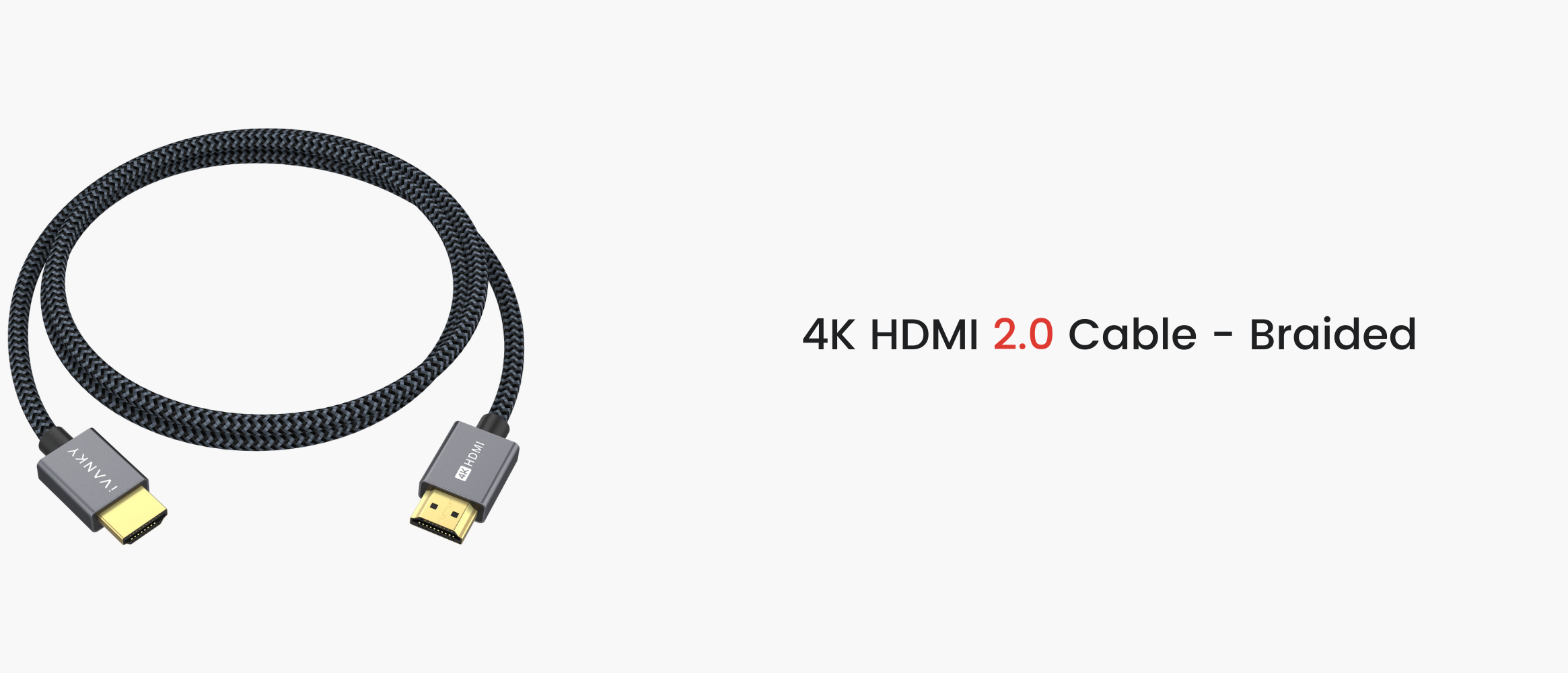Was ist ein HDMI-Kabel?

Mit dem exponentiellen Wachstum von Information und Technologie ist HDMI, die Abkürzung für High-Definition Multi-Media Interface, zum neuen erwarteten Standard für Benutzer von Multimedia-Produkten geworden. Nach jahrelanger Entwicklung hat sich HDMI zu einem weithin akzeptierten Standard für die Übertragung digitaler Video- und Audiosignale zwischen Fernsehgeräten und Computermonitoren entwickelt. Die Popularität von HDMI lässt sich an der Tatsache ablesen, dass HDMI-Anschlüsse an fast jedem auf dem Markt befindlichen Anzeigegerät zu finden sind.
In welchem Jahr feierte HDMI sein Debüt?
Wenn wir uns mit einem Produkt beschäftigen, mit dem wir sehr vertraut sind, ist es ein guter Anfang, seine Entwicklungsgeschichte zu betrachten.
Wissen Sie was? Ich war wirklich überrascht von der Tatsache, dass sogar ein so kleines elektronisches Produkt seinen eigenen internationalen Verband hat! Der Verband setzt sich aus einigen der größten Marken der Branche zusammen, darunter Hitachi, Philips, Toshiba und Sony. Hier ist die offizielle Homepage des Verbandes!

Mit Hilfe dieses internationalen Verbandes, der auch der Elektronikindustrie angehört, hat sich HDMI selbst schnell entwickelt. Dank der Hilfe des Verbandes müssen die Hersteller eine Lizenzgebühr für die Verwendung von HDMI-Schnittstellenprotokollen zahlen.
Mit der steigenden Nachfrage nach High-Definition-Multimedia entwickeln sich die HDMI-Kabel unter der Leitung des Verbandes ständig weiter. HDMI wurde in nur 20 Jahren für viele Generationen aktualisiert und verfügt über verschiedene professionelle Spezifikationen.
Als Benutzer müssen wir uns nicht alles merken. Bei HDMI-Updates gibt es einen sehr wichtigen Punkt zu verstehen: Sie wurden entwickelt, um dem menschlichen Streben nach höherer Bild- und Tonqualität gerecht zu werden, was auch eine fortschrittlichere Audio- und Videotechnologie in der Zukunft voraussetzt!
Gibt es den HDMI-Anschluss nur in einer Ausführung?
Die Antwort ist nein! HDMI-Anschlüsse gibt es in 4 verschiedenen Größen, wie Sie auf dem Bild unten sehen können.

- Typ B HDMI (29 Pins, doppelt so breit wie Typ A)
- Typ A HDMI (19 Pins, die häufigste Variante)
- Typ C HDMI - Mini-HDMI (19 Stifte)
- Typ D HDMI - Micro HDMI (19 Stifte)
Das bekannteste Modell ist zweifellos der HDMI-Typ A, der auf dem Markt am häufigsten anzutreffen ist. Wir werden ihn im Folgenden im Detail vorstellen.
HDMI ist für viele Menschen interessant. Warum eigentlich? Gibt es irgendwelche Gründe, warum ich es brauchen könnte?
Bevor Sie diese Fragen beantworten, sollten Sie sich fragen
- Schauen Sie gerne Theaterstücke?
- Haben Sie einen Laptop und einen Desktop-Computer, die eine regelmäßige Verbindung benötigen?
- Spielen Sie gerne Videospiele?
- Mögen Sie Fotografie?
Solange Ihre Antwort lautet: Ja! Herzlichen Glückwunsch, Sie bemerken es vielleicht nicht, aber es existiert in Ihrem täglichen Leben! HDMI-Kabel sind ein unverzichtbarer Bestandteil Ihres Lebens!
Wie bereits erwähnt, ist HDMI ein Muss für fast alle Anzeigegeräte, was die Bedeutung von HDMI verdeutlicht. Im Grunde genommen benötigen alle Audio- und Videogeräte HMDI für die Videoübertragung!
Die nachstehende Tabelle veranschaulicht die Vielfalt der HDMI-Anwendungen:

- Fernseher, Computerbildschirm, Projektor;
- DVD-Spieler, Blu-ray-Spieler
- Laptop, Schreibtisch;
- Spielkonsolen, wie Nintendo Switch, PS4, usw;
- Heimkino-Verstärker;
- Professionelle Spiegelreflexkamera und Videokamera;
- Andere Multimedia-Streaming-Geräte.
Wie in der obigen Abbildung zu sehen ist, wird es schwierig sein, Multimedia-Bilder ohne HDMI zu übertragen!
Welches HDMI-Kabel ist das überzeugendste? Welche Version von HDMI sollte ich kaufen?
Wie wir bereits erwähnt haben, hat sich HDMI in den letzten 20 Jahren weiterentwickelt, um eine bessere Bild- und Tonqualität zu gewährleisten. Natürlich brauchen wir nicht jede Generation zu kennen, wir wählen drei aus, HDMI 1.4, HDMI 2.0 und HDMI 2.1, die auch auf dem Markt beliebt sind, um sie vorzustellen. Ich werde einen Überblick über die Funktionen der einzelnen Versionen geben.
HDMI 1.4
HDMI 1.4 kam 2009 auf den Markt und erregte die Aufmerksamkeit der Welt - es war das erste Mal, dass HDMI in der Lage war, 4K-Videos zu übertragen! Stellen Sie sich vor, Sie könnten jetzt kein 4K-Video ansehen, aber vor zehn Jahren konnten sie es schon übertragen.
Die wichtigsten Merkmale dieses Updates sind:
- Unterstützt zum ersten Mal 4K@24Hz Videoübertragung;
- Unterstützt zum ersten Mal die 3D-Technologie;
- Unterstützt zum ersten Mal die HDMI ARC Audioübertragungstechnologie;
- Zum ersten Mal wird die gemeinsame Nutzung des Internets unterstützt.
Es gibt eine Menge technischer Highlights, aber wir können Ihnen sagen, dass es nur 24FPS bei 4K-Auflösung erreichen kann. Eine 4K-Videoübertragung mit 30FPS oder sogar 60FPS wird erst in späteren Versionen unterstützt werden.
HDMI 2.0
HDMI 2.0, das 2013 veröffentlicht wurde, hat alle Schwächen der Vorgängerversionen erfolgreich beseitigt:
- Unterstützt 4K@60Hz Videoübertragung;
- Erhöhte Bandbreite auf 18 Gb/s;
- Volle Unterstützung für 10-Bit- und 12-Bit-Farbtiefe, die für sattere und genauere Farben sorgt;
- Unterstützt bis zu 32 Kanäle eines Heimkinosystems und ermöglicht so ein beeindruckendes 3D-Filmerlebnis zu Hause;
Wie Sie sehen können, behebt HDMI 2.0 fast alle Schwachstellen von HDMI 1.4 behoben! HDMI 2.0 ist zum aktuellen Mainstream-Standard geworden. Wir sind stolz darauf, dass wir HDMI 2.0-Kabel in mehreren unserer Produktlinien anbieten. Viel Spaß beim Stöbern und Kaufen!
HDMI 2.1
Vier Jahre später, im Jahr 2017, erschien HDMI 2.1, und es sieht so aus, als ob es beschlossen hat, den DisplayPort-Kabeln in gewisser Weise Konkurrenz zu machen.
- Unterstützt 8K@60Hz und 4K@120Hz Videoübertragung, und sogar bis zu 10K Auflösungsrate;
- Erhöhte Bandbreite auf 48 Gb/s;
- Dynamisches HDR und eARC (Enhanced Audio Return Channel);
- Verbesserte Spielfunktionen, einschließlich VRR, ALLM, QFT;
HDMI 2.1 bietet eine beeindruckende neue Bildwiederholrate und Auflösung, aber es gibt derzeit nur wenige kommerzielle Geräte auf dem Markt, die damit verwendet werden können. Die Verbesserung des Spielerlebnisses macht HDMI zu einer weiteren guten Wahl für Gamer neben DisplayPort-Kabeln. Vergessen Sie nicht, dass sowohl PS5 als auch Xbox Series X HDMI 2.1 unterstützen.
Wenn du deine PS5 bereits erhalten hast, kannst du dir hier ein neues geflochtenes HDMI 2.1-Kabel für deine geliebte Spielekonsole holen.
Was die oben erwähnten Unterschiede zwischen Bandbreite, ARC & eARC, Farbtiefe, VRR, ALLM und QFT betrifft, werden wir Sie in den nächsten Blogbeiträgen auf dem Laufenden halten! Hinterlassen Sie uns Ihre Meinung im Kommentarbereich unten!




